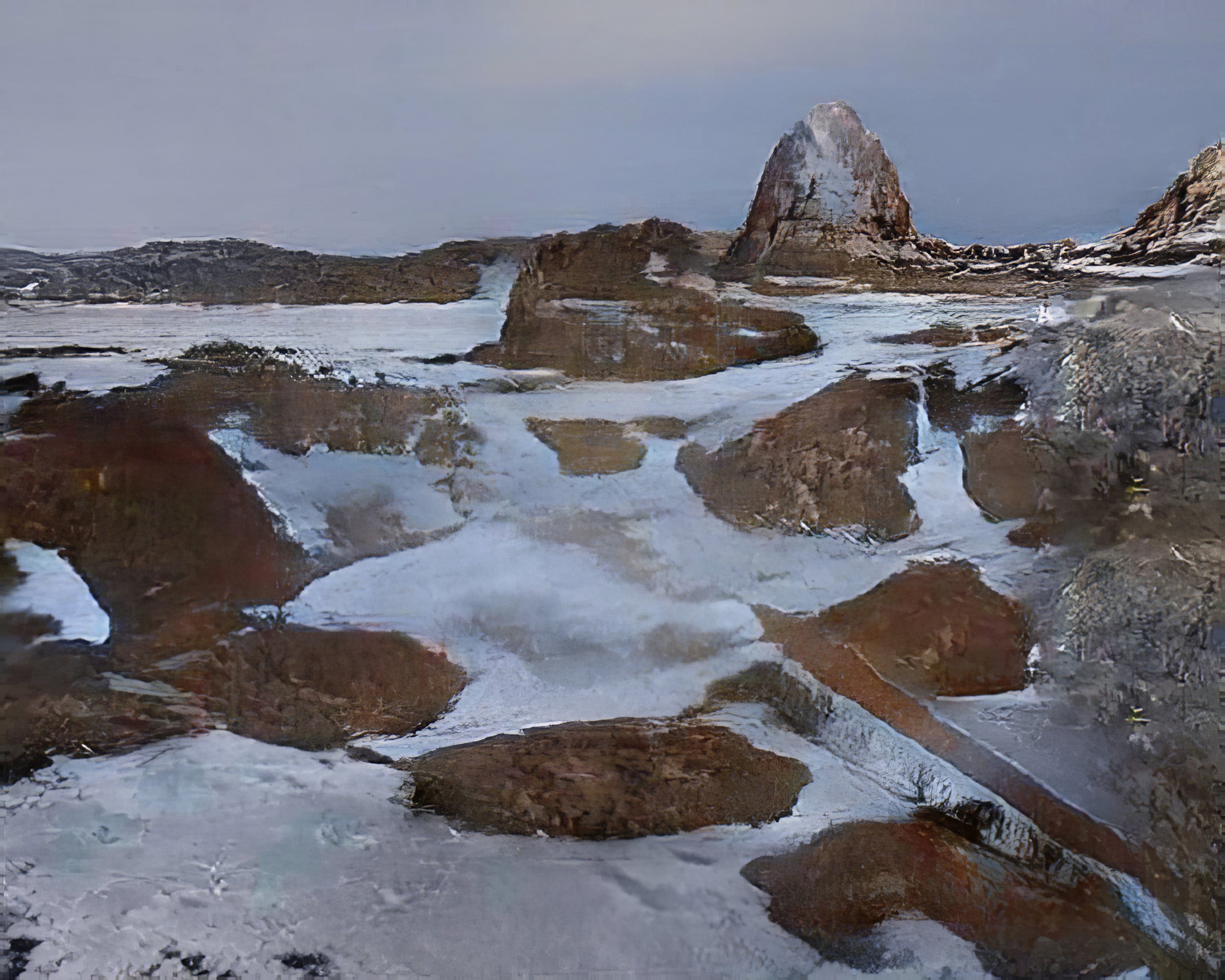Deep Fog
A key ability of image recognition technologies resides in the correct interpretation, using depth maps, of the spatial configuration of what is represented in a picture. Around 1990, research on computer vision based on deep learning was already confronted with the complexity of reading 2D and 3D images, as the task of perceiving spatial environments doesn’t rely on a monolithic 3D model, which could be transposed by a machine. Using images of mountains peaks shot by himself, photographer Gaël Corboz addresses the ethereal qualities of these limits between the mountains and the sky, both physical and metaphorical. The personal aesthetic experience, the artist aims to mediate, is here reflected within the technological and formal articulation of the project. Using both semantic image synthesis, a generative adversarial network (GAN) trained on oil paintings, and image recognition technology trained on photographs, Corboz’s images linger in the interstice between human perception and computer vision. The sky, the structure of various types of clouds, the fog, the snow and the geologic structure of the mountains themselves interpenetrate each other visually, creating eerie landscapes between glitch aesthetics and science fiction worlds, between the fictions of painting and the verisimilitude of photography.
Text by Claus Gunti









